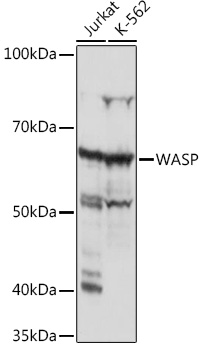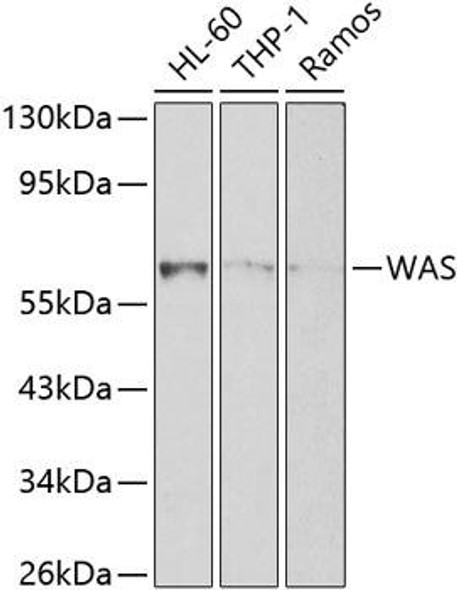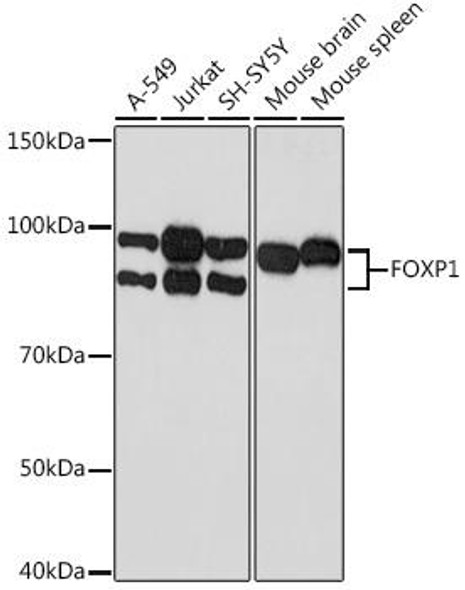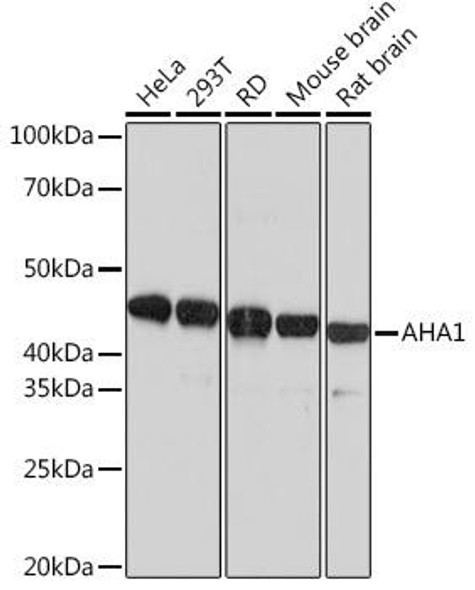Description
WASP Rabbit Monoclonal Antibody (CAB5132)
The WASP Rabbit Monoclonal Antibody (CAB5132) is a highly specific and sensitive tool for researchers studying the Wiskott-Aldrich syndrome protein (WASP) in various cellular processes. This antibody, produced in rabbits, is optimized for use in Western blotting and immunofluorescence applications, allowing for precise detection and analysis of WASP expression in cell lines and tissues.WASP is a key regulator of actin cytoskeleton dynamics and is involved in a wide range of cellular functions, including cell migration, phagocytosis, and T cell activation. Dysregulation of WASP has been linked to immune deficiencies and autoimmune diseases, making it a crucial target for investigation in immunology and cancer research.
By using the WASP Rabbit Monoclonal Antibody, researchers can gain valuable insights into the role of WASP in cellular signaling pathways and disease pathogenesis. Its high specificity and sensitivity make it a reliable tool for studying WASP function in both normal and diseased conditions, ultimately advancing our understanding of complex biological processes and potential therapeutic targets.
| Product Name: | WASP Rabbit Monoclonal Antibody |
| SKU: | CAB5132 |
| Size: | 20uL, 100uL |
| Isotype: | IgG |
| Host Species: | Rabbit |
| Reactivity: | Human,Mouse,Rat |
| Immunogen: | A synthetic peptide corresponding to a sequence within amino acids 1-100 of human WASP (P42768). |
| Sequence: | MSGG PMGG RPGG RGAP AVQQ NIPS TLLQ DHEN QRLF EMLG RKCL TLAT AVVQ LYLA LPPG AEHW TKEH CGAV CFVK DNPQ KSYF IRLY GLQA GRLL WEQE |
| Tested Applications: | WB IF/ICC ELISA |
| Recommended Dilution: | WB,1:500 - 1:2000 IF/ICC,1:50 - 1:200 |
| Synonyms: | THC; IMD2; SCNX; THC1; WASP; WASPA |
| Positive Sample: | Jurkat,K-562,Mouse liver |
| Conjugate: | Unconjugated |
| Cellular Localization: | Cytoplasm, cytoskeleton. |
| Calculated MW: | 53kDa |
| Observed MW: | 60kDa |
The Wiskott-Aldrich syndrome (WAS) family of proteins share similar domain structure, and are involved in transduction of signals from receptors on the cell surface to the actin cytoskeleton. The presence of a number of different motifs suggests that they are regulated by a number of different stimuli, and interact with multiple proteins. Recent studies have demonstrated that these proteins, directly or indirectly, associate with the small GTPase, Cdc42, known to regulate formation of actin filaments, and the cytoskeletal organizing complex, Arp2/3. Wiskott-Aldrich syndrome is a rare, inherited, X-linked, recessive disease characterized by immune dysregulation and microthrombocytopenia, and is caused by mutations in the WAS gene. The WAS gene product is a cytoplasmic protein, expressed exclusively in hematopoietic cells, which show signalling and cytoskeletal abnormalities in WAS patients. A transcript variant arising as a result of alternative promoter usage, and containing a different 5' UTR sequence, has been described, however, its full-length nature is not known.
| Purification Method: | Affinity purification |
| Gene ID: | 7454 |
| Clone Number: | ARC1204 |
| Storage Buffer: | Store at -20℃. Avoid freeze / thaw cycles.Buffer: PBS with 0.02% sodium azide,0.05% BSA,50% glycerol,pH7.3. |











